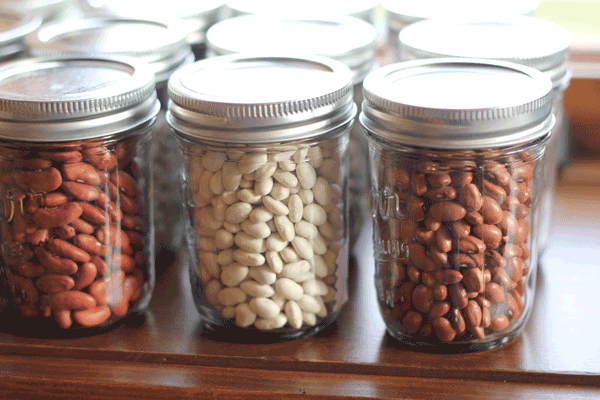
How and where to store beans correctly?
Store-bought dry beans are not difficult to store. Problems can arise with beans grown on your own. The fact is that in some cases, parasites infect beans with diseases that are not noticeable at the time of collection. If you look closely at the beans and find small black dots on their surface that resemble holes, then you cannot store them. This sign appears when beetles lay eggs, and the larvae from them appear after a considerable amount of time. So, in the process of storing such beans, the appearance of mold can come as a surprise.
The nuances of storing beans at home:
- it is not worth storing beans with black dots on the surface (these are traces of lesions by beetles that lay larvae inside the beans, such beans will quickly deteriorate and become covered with mold);
- you should not store beans with pods (you will not be able to inspect the beans in the pods, and their rapid drying can turn into a decay process, the beans in this case will also start to deteriorate);
- it is impossible to store wet beans (moisture becomes the main reason for the appearance of mold and the beginning of the decay process);
- in no case should you wash the beans before storage;
- you can store only dry, undamaged beans without signs of damage by insects or diseases;
- if a plaque appears on the beans during storage, then it must be thrown away (you cannot eat spoiled beans even after thoroughly washing them);
- before storing, the beans must be sorted out (too dry or damaged beans must be removed);
- if the beans are grown independently, then you can save them for a long time in the refrigerator (it is important to choose a container in which condensation does not accumulate);
- you can store a large amount of beans on the balcony, in the pantry, in the basement or cellar (storage of beans in fabric bags is considered ideal);
- after heating, beans can be sorted into glass jars and tightly closed with lids;
- to exclude the appearance of bugs and other insects in beans, it is recommended to place a head or a clove of garlic in containers with beans;
- in the refrigerator, it is better to store beans in compartments located on the door;
- if beans are stored in a closet, then you need to choose a place as far as possible from heat sources (batteries, gas stoves);
- if you subject the beans to heat treatment (drying in the oven) before storing them, this will exclude their germination, and moisture, which can cause rotting, will evaporate;
- Glass jars, cloth bags, paper bags, or cardboard boxes are the best options for storing beans.
If the beans are stored in a glass jar, then a small amount of ash or ash can be poured on top (one or two pinches). Such an addition will become an obstacle to the penetration of excess air into the container, and the ash is washed off very easily, without leaving the slightest sign of its presence.
How much to store beans
Subject to all storage rules, the shelf life of beans reaches two years. The optimal storage temperature is from +5 to +10 degrees. In the presence of air humidity of no more than 50%, beans will retain their original taste properties for a long time.
The temperature regime for storing beans is of particular importance. At temperatures from +5 to +10 degrees, most parasites stop developing. If you store the beans in such conditions, then the larvae will not appear in them, and the process of decay will not begin.
To get rid of insects and signs of their vital activity in beans, you can use heat treatment. To do this, the beans are placed on a baking sheet and heated in the oven at a temperature of 80-90 degrees. This procedure completely destroys parasites. It is necessary to warm up the beans for 5 minutes.
Features of storing green beans (asparagus beans):
- beans in pods can be stored in the refrigerator for a maximum of 3-4 days;
- frozen beans in pods can be stored in the freezer for more than 6 months (after half a year of storage, some taste properties of green beans may change, and before freezing, they must be blanched in boiling water for 2-3 minutes).
Beans without pods can be stored for up to two years, but must be inspected regularly. Beans should be eaten earlier than the specified period. Keep in mind that the longer some foods are stored, the harder they become after cooking. Beans are no exception in this case. Old and too dry beans will be very difficult to cook and will take several times longer than usual.










